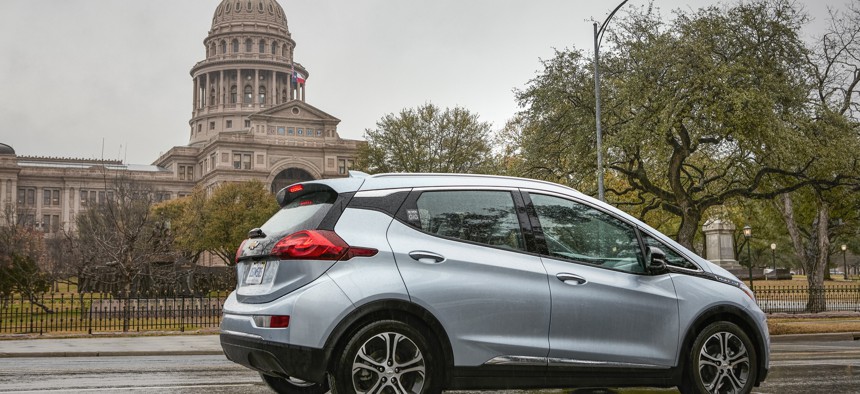Sharing as a Solution in Cities with Limited Resources

Maven’s first all-electric fleet of shared vehicles for freelance driving launched in Austin, Texas. General Motors
COMMENTARY | Car sharing, the gig economy and vehicle electrification are all colliding in Austin. The result is lower emissions and economic opportunities.
With a majority of the world’s population moving to cities, it’s important that public and private partners take a critical look at how existing resources can be best allocated. Cities are actively addressing mobility challenges by embracing a broad approach to shared mobility. In many ways, the sharing economy is not new, but more than ever people are prioritizing experiences versus ownership.
Sharing means more people benefit from resources and, if done thoughtfully, places less strain on city ecosystems. When looking at personally owned vehicles, many sit idle on streets and in parking structures at least 90 percent of the day. Not only does sharing offer improved efficiencies from an underutilized asset, but it can prompt people to rethink how we interact with limited resources, such as real estate, while maximizing existing assets, such as transit. Together, these create a redesigned mobility ecosystem that can realize both environmental and social benefits for all stakeholders. For Maven, this means we work with cities to build a seamless and flexible platform where city resident can easily access cars for a weekend trip or drive as a freelancer to earn money even if they don’t own a car.
As mayor of Austin, I’m proud to be an advocate for shared mobility because I understand how it can improve access across Austin. Last year, Austin welcomed Maven Gig, which provides members one of the major tools, a car, to securing a job in the freelance economy. As the gig economy continues to supply employment opportunities, cities and companies alike are finding ways to support and empower this emerging economy. With an agnostic platform, Maven Gig enables freelancers to earn money on their own terms and drive for a variety of sharing economy-focused gigs in the rideshare and delivery space.
Earlier this week, Austin released the Strategic Mobility Plan, its first comprehensive multimodal transportation plan. It presents policies and actions for the next 20 years that will work towards achieving the transportation goals laid out in the Imagine Austin vision. One of the city’s overarching goals is to reduce single-occupancy vehicle use, especially the number of commuters who drive alone to work from about 74 percent now to 50 percent by 2039, which can partly be achieved through car sharing.
At Maven, we concur that we need a thoughtful, transparent approach to the sharing economy—one that enables residents’ and cities’ goals. Our work with cities, like Austin, has taught us that we need to actively support how mobility weaves across the landscape and across modes. Electrification is certainly one of those key considerations. Seeing demand for electric vehicle car sharing in Austin, Maven added Chevrolet Bolt EVs to the fleet throughout its first year. And since launching in Austin, Maven Gig drivers have logged over 813,000 electric miles, saving an estimated 32,000 gallons of gas in area alone. Thanks to great work by Austin Energy, the city has an extensive array of charging stations all over town, making electrifying fleets and personally owned cars a reliable option as we seek to lower emissions.
As car ownership is no longer viewed as the sole solution for personal transportation, sharing will continue to empower a variety of mobility solutions in cities. Maven’s open dialogue with Austin city officials helps us understand key mobility perspectives as we innovate to meet the transportation needs over the next 100 years.
Steve Adler is the mayor of Austin. Alex Keros is the smart cities chief at GM Mobility.
NEXT STORY: CFTC chairman calls for light touch on blockchain regulation





